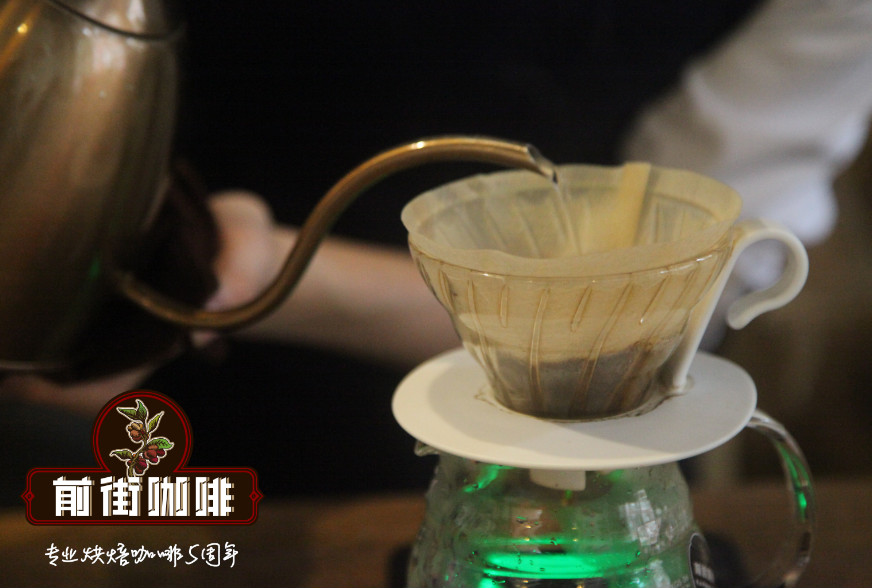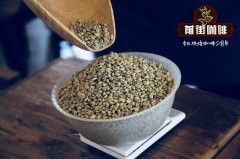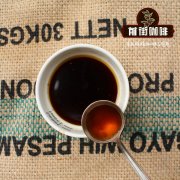What are the coffee producing areas in Peru? Peruvian Coffee Yanisha Cooperative introduces Peruvian Coffee varieties

Professional coffee knowledge exchange more coffee bean information please follow the coffee workshop (Wechat official account cafe_style)
Peruvian coffee, famous for its organic coffee. Peru (Spanish: Per ú; Quechua, Aymara: Piruw), the full name of the Republic of Peru (Spanish: Rep ú blica del Per ú), is a country in western South America.
Peru is a coffee-rich country-only 10% of Arabica coffee can be called boutique coffee. The plateau climate brought by high altitude, as well as suitable temperature, air, light and fertile soil, these unique geographical advantages prolong the growing period of coffee beans and provide perfect conditions for growing delicious and fragrant Arabica coffee beans.
The Chanchamayo producing area of central Peru is a native Indian of the local Yanesha tribe. The mountain is extremely high above sea level, averaging between 1550 and 1850 meters above sea level. It is an ancient Indian reserve with 20, 000 inhabitants who raise poultry and farm livestock for a living. In order to increase family income, they set up the Yanisha Cooperative CENTRAL DEPRODUCTORES YANESHA (CEPRO YANESHA) and began to grow coffee. Through a Dutch Rabobank Foundation project, with the assistance of financial and technical personnel, it began exporting one container (18 tons) to the European market in 2011, and two more containers in 2012, which will become 13 containers and fewer high-priced special raw beans by 2017, greatly improving the income of local aboriginal families.
Cepro Yanesha COOP is located in remote mountain areas and sparsely populated. Its coffee is grown in an organic (Organic Coffee) way. With the assistance of the Rabobank Foundation Fund, experts guide organic cultivation and then sell it to importers through Rabobank links. Members of the cooperative coffee family grow less than 2 hectares on average, and the cooperative is surrounded by natural primeval forests, tall trees and fertile land. Moreover, the intermittent torrential rain in the afternoon brings abundant rainfall and moisture, and primitive animals and plants create natural shade trees and natural organic matter that increase soil fertility. Today, under the Rabobank Foundation Fund Assistance Program, 70 coffee cooperatives have successfully grown coffee for marketing and export through this fund. Coffee has a soft citrus flavor, very low acidity, medium mellow, caramel sweetness and balanced taste. Charming aroma and soft taste, sweet and meticulous.
Peru is the place of the ancient Inca empire, covering an area about 35.7 times the size of Taiwan, along with the Antilles, the highest peak in South America, when 180 Spanish people entered the world-famous city of gold in 1533 and returned to Spain with plundered gold. Coffee was introduced and grown in the 18th century, and the Andes stretched across Peru, covering an area of about 3 gamma and 4. Peru, located in South America, covers an area of more than half of Central America and is the source of the Amazon. Peru has a population of about 28 million, of which more than 200000 small farmers grow coffee, with an average planting area of less than 2 hectares. Coffee is planted along the eastern side of the Andes, with a planting height of meters, and a vast coffee planting area, which can be divided into three areas: North, Central and South:
North District: Piura, Amazonns, San Mortin
Central: Huanuco, Junin, Pasco, Chanchamayo
Southern District: Cuzco, Ayacucbo, Apurinac, Puno, Urubamba
The main planting areas include the Chamayo Valley east of Lima, the Beibu Mountain area and the western slopes of the Andes. More than 10 areas with unique coffee flavor can be divided. The annual output is about 3 million bags of Arabica coffee, all of which are collected and washed and mainly exported to the United States and Germany. Up to 98% of Peruvian coffee is grown in forest areas, most of which are produced by small farmers. Most Peruvian coffee is grown under natural conditions, and local farmers have little money to buy chemical fertilizers and pesticides, which is why almost all the locally produced coffee is organic beans. It is currently the third largest exporter of coffee in South America and the ninth largest exporter of coffee in the world. Coffee varieties are Typica,Bourbon, Cattura, Pache.
END
Important Notice :
前街咖啡 FrontStreet Coffee has moved to new addredd:
FrontStreet Coffee Address: 315,Donghua East Road,GuangZhou
Tel:020 38364473
- Prev

Blue Mountain Coffee beans Jamaica Blue Mountain Coffee must know
Professional Coffee knowledge Exchange more information on coffee beans Please follow Coffee Workshop (Wechat official account cafe_style) when speaking of Jamaica, everyone's eyes immediately lit up because it produced the best Jamaican Blue Mountain Coffee (Jamaica Blue Mountain) in the world. We absolutely believe that Jamaica Blue Mountain Coffee is the best coffee, and its sour, sweet, mellow and bitter taste is well balanced.
- Next

Introduction of Colombian Sultan Rumei Sun-cured Coffee beans _ Flavor characteristics of Sudan Rume Coffee varieties
Professional coffee knowledge exchange more coffee bean information please follow the coffee workshop (Wechat official account cafe_style) Columbia Cloud Manor Colombia Las Nubes over the years, in Colombia to carry out boutique coffee cultivation and experiments of well-known landowners Camilo Merizalde, in addition to the excellent San Tuareo Manor and Finca Inmaculate, through its many years
Related
- Detailed explanation of Jadeite planting Land in Panamanian Jadeite Manor introduction to the grading system of Jadeite competitive bidding, Red bid, Green bid and Rose Summer
- Story of Coffee planting in Brenka region of Costa Rica Stonehenge Manor anaerobic heavy honey treatment of flavor mouth
- What's on the barrel of Blue Mountain Coffee beans?
- Can American coffee also pull flowers? How to use hot American style to pull out a good-looking pattern?
- Can you make a cold extract with coffee beans? What is the right proportion for cold-extracted coffee formula?
- Indonesian PWN Gold Mandrine Coffee Origin Features Flavor How to Chong? Mandolin coffee is American.
- A brief introduction to the flavor characteristics of Brazilian yellow bourbon coffee beans
- What is the effect of different water quality on the flavor of cold-extracted coffee? What kind of water is best for brewing coffee?
- Why do you think of Rose Summer whenever you mention Panamanian coffee?
- Introduction to the characteristics of authentic blue mountain coffee bean producing areas? What is the CIB Coffee Authority in Jamaica?

